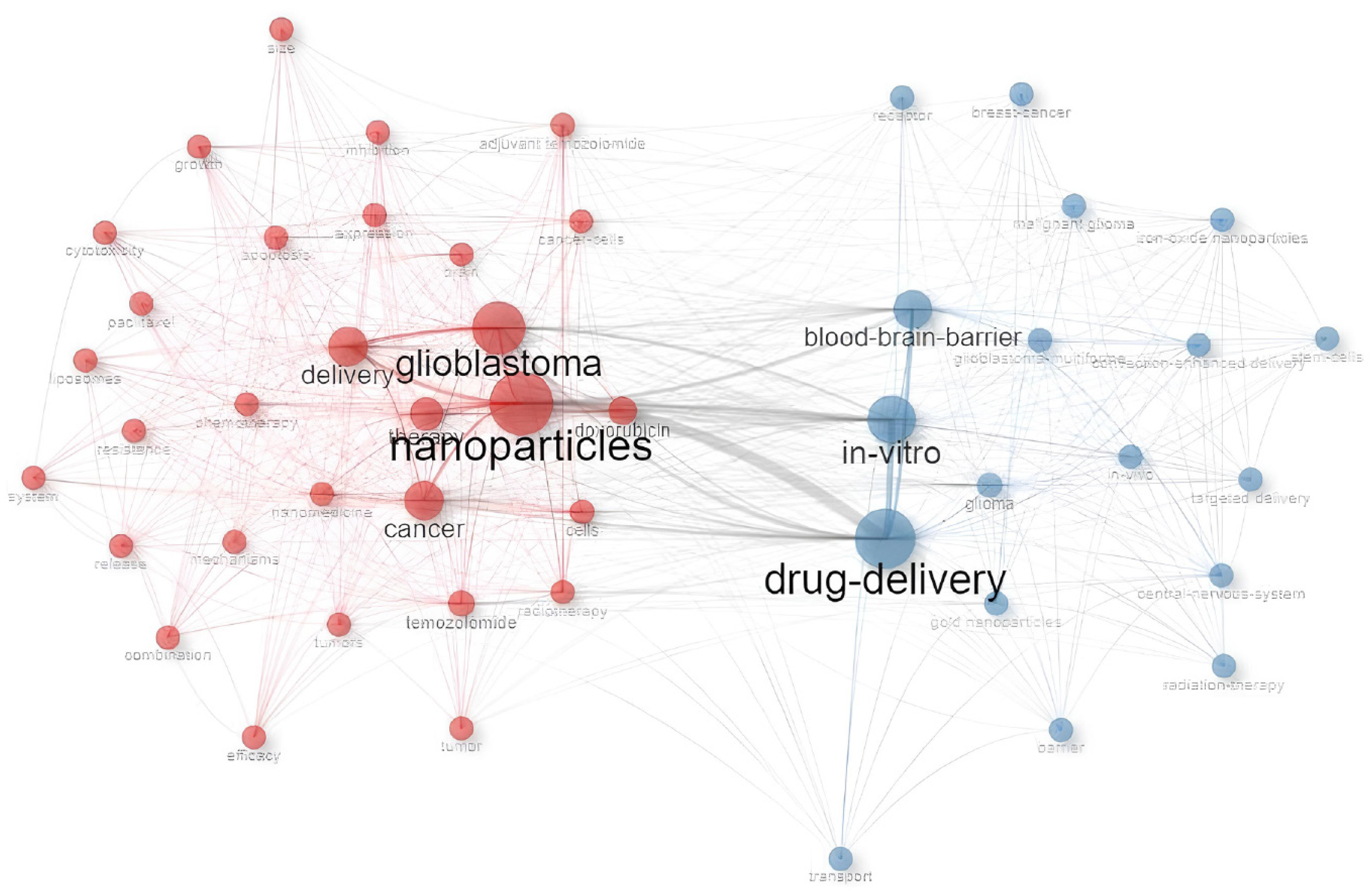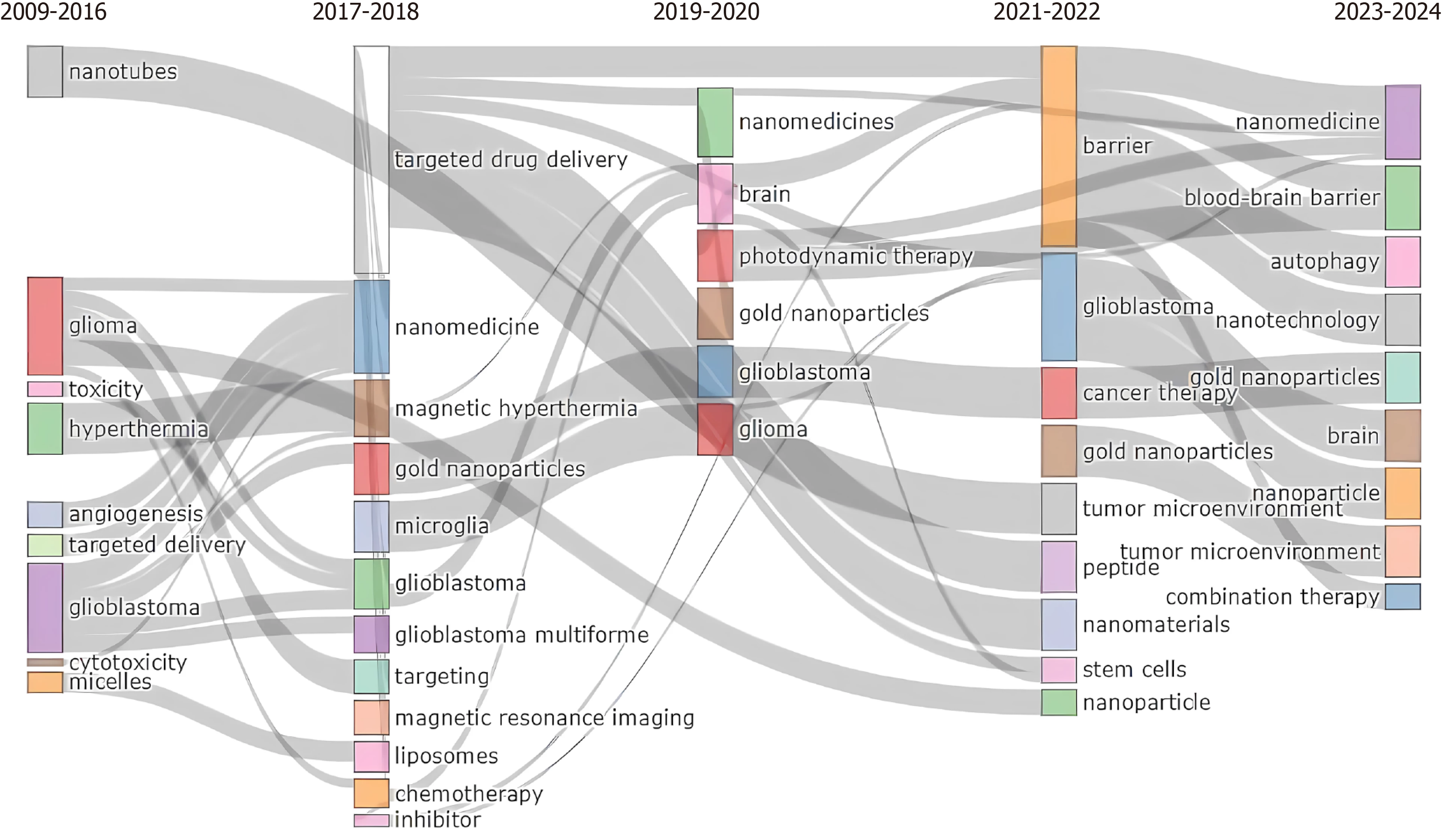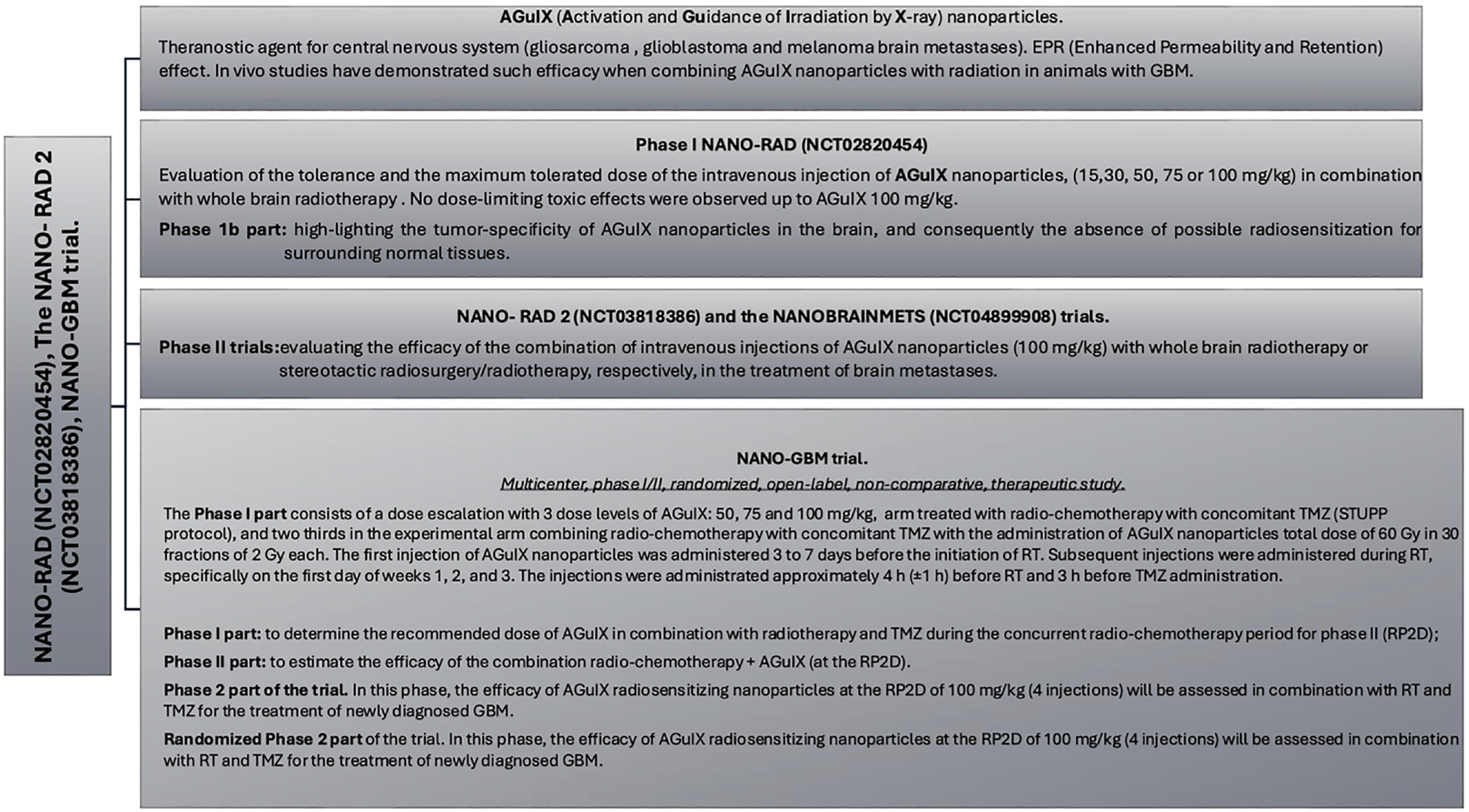Copyright
©The Author(s) 2025.
World J Clin Cases. Apr 6, 2025; 13(10): 101719
Published online Apr 6, 2025. doi: 10.12998/wjcc.v13.i10.101719
Published online Apr 6, 2025. doi: 10.12998/wjcc.v13.i10.101719
Figure 1 Annual trend of publications pertaining to nanomedicine uses for glioblastoma from 2009 to 2024.
Each bar denotes the aggregate count of peer-reviewed articles, reviews, editorials, and conference papers published annually, as documented in the Web of Science database. The prevailing upward trend underscores a growing scientific interest and expenditure in research concerning nano-drug delivery systems integrated with low-dose radiation in oncology.
Figure 2 International partnership network among nations engaged in glioblastoma nanomedicine research.
The dimensions of each node indicate the publishing volume of each country, whilst the lines depict the frequency of collaborative publications among nations. Color-coded clusters indicate regional collaboration patterns, with notable clusters demonstrating robust connections across China, the United States, and European countries. This figure illustrates the geographical diversity and collaboration intensity within the field.
Figure 3 Collaboration network illustrating the global linkages among nations engaged in glioblastoma nanomedicine research.
Node dimensions represent publishing quantities, whereas line thickness indicates the level of collaboration. Clusters signify regions of frequent international collaboration, with the United States and China serving as pivotal centers, promoting global research integration.
Figure 4 Illustration of the collaborative network among prominent institutes engaged in glioblastoma nanomedicine research.
Each node signifies an institution, with node size denoting publication volume and edge thickness representing the frequency of inter-institutional collaboration. Distinct color coding signifies clusters of strongly networked universities, emphasizing important cooperation hubs and possible research synergies.
Figure 5 Glioblastoma nanomedicine research.
A: A comparison illustration of the countries with the highest citations in glioblastoma nanomedicine research. Each bar illustrates a country's total citation count, offering insight into regional research influence and the acknowledgment of scholarly work performed by scholars in different nations. These graphic highlights the substantial contributions of the United States, China, and European countries to the subject; B: Graphical depiction of significant institutions' contributions to glioblastoma nanomedicine research, ordered by publication volume. Each bar signifies an institution, such as Johns Hopkins University, illustrating the premier research organizations that propel innovation and discovery within this specialized domain; C: Journals classified by their publication volume in glioblastoma nanomedicine, in accordance with Bradford’s Law. Journals are ranked based on the volume of published papers, with the 'International Journal of Nanomedicine' at the forefront. The distribution highlights journals that function as important venues for the dissemination of research in nanomedicine applications for oncology.
Figure 6 Co-occurrence network of important phrases in glioblastoma nanomedicine literature obtained from keyword analysis.
The dimensions of the nodes reflect the frequency of each term, while the links denote co-occurrences in publications. The network identifies fundamental theme domains, such as medication delivery and blood-brain barrier methodologies, while highlighting the interconnectedness of new ideas in glioblastoma research.
Figure 7 Sources’ Production over time.
The International Journal of Nanomedicine is the most representative.
Figure 8 Most Cited Articles in Nanomedicine Pertaining to Glioblastoma Entries comprise article names, authors, publication years, and citation frequencies.
These significant publications signify crucial developments, including the use of nanoparticles in drug transport and tumor-targeting mechanisms, that have influenced contemporary understanding and research directions in the field. The most Global cited document was Jensen et al[8] the most local cited document was Ganipineni et al[20]. A: Global cited document; B: Local cited document.
Figure 9 The top ten keywords (right side): Nanomedicine, glioblastoma, nanoparticles, glioma drug delivery, blood-brain barrier, cancer, and brain tumor.
Figure 10 Treemap of keywords’ occurrence.
The top three are: Nanoparticles (8%), drug delivery (7%), and glioblastoma (6%).
Figure 11 Keyword network analysis.
Two different clusters are present glioblastoma, nanoparticle, and drug delivery.
Figure 12 Progression of principal research themes in glioblastoma nanomedicine, spanning from 2009 to 2024.
Keywords are monitored longitudinally, with theme clusters illustrating transitions in focal areas, such as 'nanotubes' in early years to 'tumor microenvironment' and 'stem cells' in contemporary research. This chart provides insights into the evolving nature of research goals, illustrating the field's advancement.
- Citation: Pontoriero A, Critelli P, Zeppieri M, Bosurgi A, Guercio S, Caffo M, Angileri FF, Parisi S, Lavalle S, Pergolizzi S. Nano-drug delivery systems integrated with low radiation doses for enhanced therapeutic efficacy in cancer treatment. World J Clin Cases 2025; 13(10): 101719
- URL: https://www.wjgnet.com/2307-8960/full/v13/i10/101719.htm
- DOI: https://dx.doi.org/10.12998/wjcc.v13.i10.101719

























